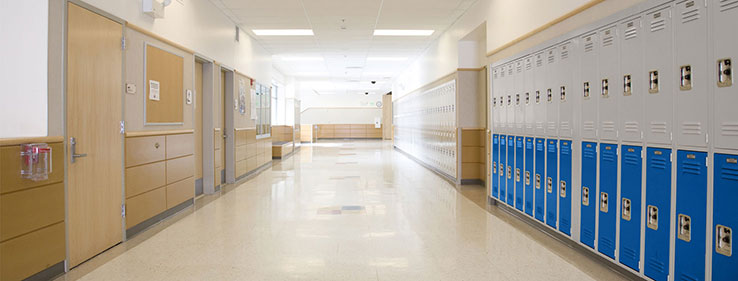What's Your School’s Brand?
Trends are shifting in the world of education; Public and Private schools are finding it necessary to respond to their newest competition, Public Charter Schools. Introduction of Public Charter Schools began in the early 1990s and has grown in the last 15 years. From 1999 to 2011 students enrolled in Public Charter Schools increased from .3 million to 1.8 million.1 This development is becoming known as The School Choice Movement. Together, students and parents have the opportunity to choose which educational opportunity they prefer rather than what is geographically available.


School Branding is becoming fundamentally important. Schools are looking at differentiation and promoting their specialty.

School Branding is becoming fundamentally important. Schools are looking at differentiation and promoting their specialty.
In response to this new movement, schools are finding the need to strategize in order to compete. This is school spirit taken to a new level and goes beyond social media, logos and signage but addresses the building too. Painting the school colors throughout the building encourages school pride. Consider using school colors as an accent along with basic neutrals in common areas, entrances, corridors, gymnasiums and lunchrooms. This colorful pride will bring confidence and excitement to the students and staff and can certainly be contagious. Refer to the Spirit Palette when selecting your school colors.
Redefining The Library
Today’s libraries have become the social hotspot for collaboration in communities where making noise is now acceptable. Libraries are finding creative ways to draw people in for more than just books. Investments are being made into the newest electronic devices such as 3D printing and laser cutting stations. Some libraries offer a place to produce music with state of the art studio equipment. Designated areas allow for individuals to bring in their own digital devices and even providing Skype stations. Libraries continue to be a place for books but they are evolving and expanding to provide additional amenities.
Inspirational Spaces
For decades, the design of a classroom has remained intact, rows of desks with an instructor at the front. Today’s technology allows teachers and students to move out of the classroom and into inspirational spaces. New collaborative spaces encourage interaction, group thinking and creativity. Instructors use SMART Boards and students utilize wireless devices connecting them to information and people throughout the world. These environments have natural light, bright colors, modular furniture and display cabinets for student’s artwork; encouraging the students sense of ownership.
The 21st Century Church
Places of worship are responding to the economic shift and digital technology. Congregations consider themselves as people not a place; the location and design of a church is not as important as providing a sense of community. It is being thought of as the “Third Place”; these facilities are providing a place for worship, fellowship, education and social interaction.
The exteriors of churches are now unrecognizable. The construction of an ornate and labor-intensive church is becoming obsolete; many communities are faced with tight budgets and are repurposing existing commercial or industrial buildings to cut costs. The Congregations are investing their money into technology and square footage with windowless auditorium spaces and elaborate productions. Modern audio systems and bands are replacing the organists and choirs and movable theatre type seating is replacing large pews. The sanctuaries are now multi-functional to provide a place for recreation and social events between services. This evolution in design has been happening for years and will continue to expand well into the 21st Century.
The Invisible Wall
A common misconception in museum design is that the walls have to be painted white. Instead colors should be carefully selected based on the collections of artwork. Colors convey a particular time, place or culture that is fitting to the art pieces. Museum visitors often want to closely examine the art and observe the artist’s technique; the wall color should not detract but be used as a tool to accentuate the artwork. The wall should feel invisible; let the art stand out not the walls.
Preserving Your Community
Historic Preservation is more than restoring old buildings and sites but a connection to the past that can provide economical, environmental and cultural benefit to a community. It can add various educational opportunities that can promote tourism and draw investment, revenue and growth. Historic communities tell a story of the past and can be a central location for festivals and cultural events that distinguish themselves from other communities.
1National Center for Education Statistics, 2013







